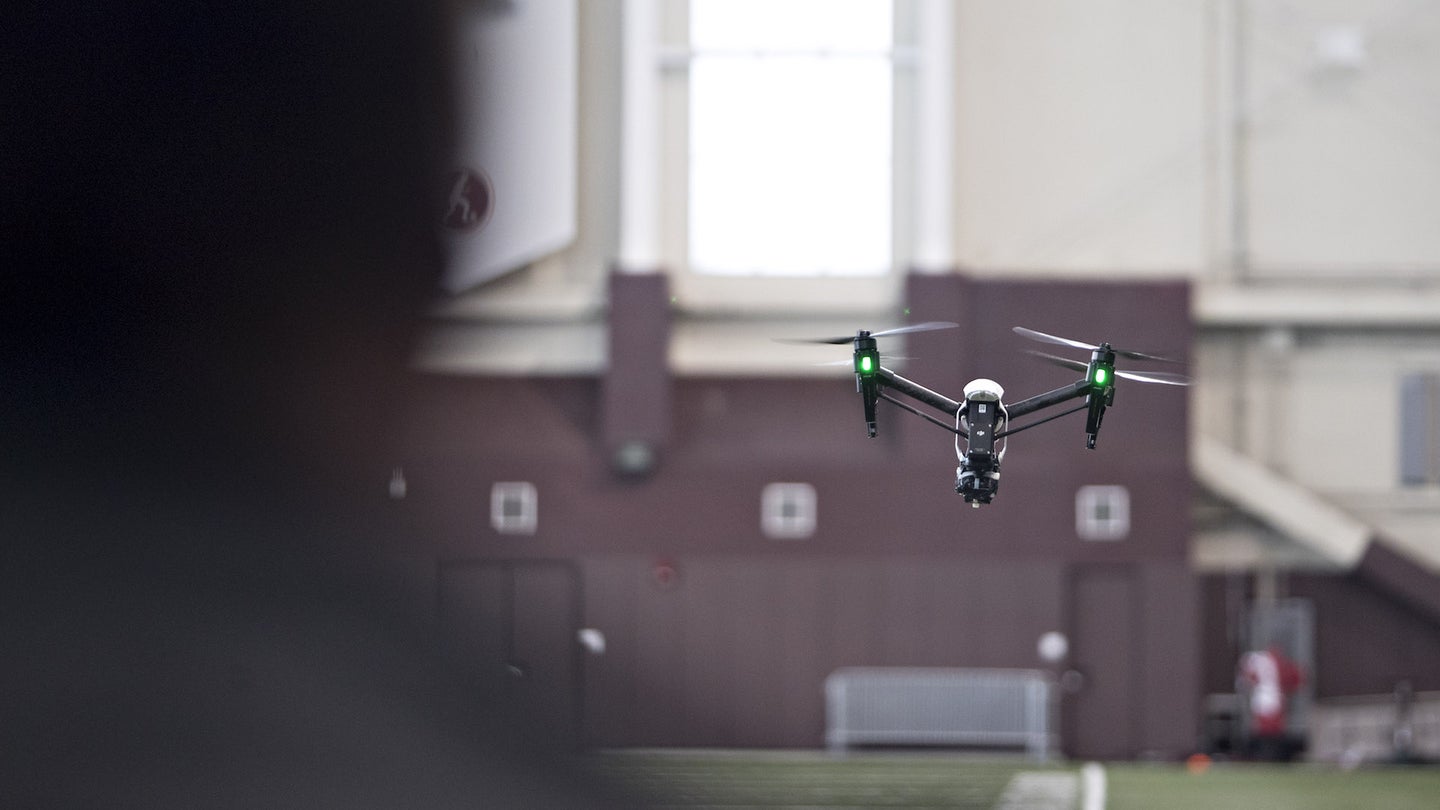The University of Michigan’s M-Air Drone Lab Is Officially Open
Last year, we reported on the University’s plans to open a drone complex and Wednesday, the M-Air lab officially celebrated its grand opening.

In 2017, we reported on the University of Michigan’s autonomous endeavors regarding both efficiency in the testing of self-driving cars, and a plan to establish an outdoor drone-testing complex called the "M-Air fly lab." According to The Detroit News, the university officially celebrated the grand opening of that facility Wednesday. It appears to be a very modern, high-tech playground for all students involved in the field of unmanned autonomous vehicles.
The outdoor complex is reportedly ensconced between a Ford Motor Company Building intended to open in 2020, and the university’s aerospace research building. The facility, which has a 50-foot high ceiling as part of its 9,600-square-foot area, allows for a simultaneous drone-use volume of up to 25 users. Professor of aerospace engineering, Ella Atkins, is excited at the prospects of this now-completed addition to the university, and the opportunities it offers to researchers and students.
“With the addition, we can pursue research projects with all of the natural elements and without worrying about the drones flying away and us losing control,” said Atkins. “It will allow us and our students to explore all the things we dream of doing with autonomous aerial vehicles.”
As we reported last August, the four-story M-Air facility cost the university and its Office of Research a hefty $800,000, with The Detroit News reporting an additional $200,000 bill for sensor and camera equipment on top. Ultimately, however, establishing a well-equipped, reputable drone lab as part of the University of Michigan, will eventually pay off. The drone industry is growing at a rapid pace, with career growth in the field inevitably expanding as soon as federal regulations for commercial delivery are put in place. Atkins, for one, is eager for thorough research and testing to begin.
“Especially with small drones, we want to research ways to surveil and collect data, possibly to forecast weather and earthquakes,” said Atkins. “There’s also potential to use drones to collect data from disaster sites using their cameras and capabilities to transport relief items when roads are inaccessible.” In regards to her latter point, we’ve seen these use-cases in action numerous times, most recently during the aftermath of Hurricane Harvey in regards to aerial first-responder activities that could mitigate the consequences of these disasters.
The outdoor complex, itself, provides students with a chance to experience natural weather conditions as part of the variables in their testing. “It’s like an invisible fence for your dog but instead for your drone,” said fourth-year student Mia Stevens. “There are a lot of GPS challenges when working indoors and working outdoors will also help with classes.” Director of Michigan Robotics, Jessy Grizzle, is very pleased with the university’s decision to house this lab outdoors, as well. Ingeniously, the fence which serves as a functional enclosure for the unmanned aerial vehicles, but allows the weather to permeate, permits the complex to be labeled as an indoor facility, which Grizzle believes is a great benefit.
“Now flights are considered indoors, and we don't need to go through any typical outdoor flight approval process,” said Grizzle. “We could have had this indoors, but we would have been restricted by scale and students wouldn’t get the advantage of working with wind, rain and snow. This is bigger than any laboratory we could’ve had.” From a former student who wishes he’d had the opportunity to work in a lab as seemingly sophisticated as this one, to those who are fortunate enough to call it their own: enjoy, learn a lot, and pave the way.
